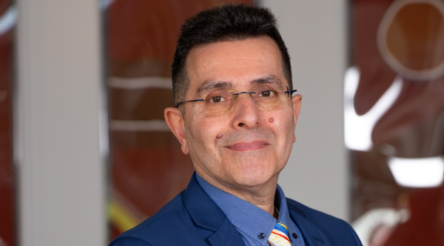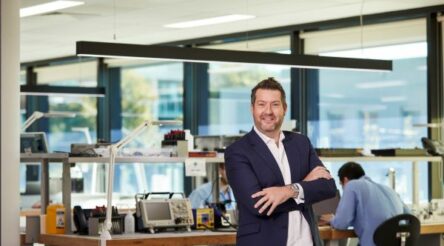Bulk procurement can revitalise government purchasing policy and impact – by Mark Leith

Today as part of @AuManufacturing’s series looking forward from the Jobs and Skills Summit, Mark Leith proposes a radical re-think of Australia’s procurement practices.
If Australia is to meet its revised 2030 emissions reduction targets, early action to accelerate zero
emission bus and truck adoption is essential.
While the business case for fleet electrification and Australian EV manufacturing is strong, fragmented procurement practices and a gap in government policy means that unnecessary uncertainty, cost and risk barriers remain.
Without strong leadership to overcome the barriers to optimal procurement, Australia also risks its potential place as a world
leader in advanced manufacturing and clean technology innovation.
The electric transport transition is nearing an economic tipping point, but complacency could result in early momentum stalling, and a fallback to the status quo.
It is already apparent that the steady-as-she-goes, procurement practices of the past won’t be enough to deliver the speed and scale of fleet turnover so urgently needed.
A federal or state government-led framework to unlock and de-risk the benefits of bulk purchasing would be a positive move to addressing the barriers to industry transition, emissions reductions, and an Australian manufacturing revival.
A new direction?
Since coming to office in May this year, the federal Labor Government has signalled a clear intent to move strongly on climate change and electric vehicle policy.
In addition to legislating higher emissions reduction targets it is also moving to upgrade grid infrastructure capacity and to develop
new electric vehicle policies and strategies.
Now is the perfect time for State and Federal Governments to come together with industry stakeholders to develop a mutually beneficial pathway forward on the production and adoption of heavy EVs.
Limited local manufacturing capacity and model availability, higher upfront costs, and uncertainties around rapid technological change, are complex challenges requiring innovative, collaborative solutions.
A more coordinated approach is called for – one that provides for greater industry certainty and makes the transition cheaper, easier, and better for all.
Economies of scale
Bulk procurement just makes good economic sense. We’ve all seen many examples of the benefits that bulk manufacturing brings, like the rapid cost reductions achieved in PV panels, as well as computers and other electronic products.
Everyone understands the dollar savings possible when buying in bulk at the grocery store.
The economies of scale that can be captured through bulk procurement can help drive rapid transitions in energy technology, and governments can play a key role.
Take for example the rollout of energy efficient street lighting in Victoria under the federal Community Energy Efficiency Program a decade ago, that brought together equipment suppliers, grid network owners, and local governments to bring forward vast energy and cost savings not possible through the traditional fragmented approach.
For heavy vehicle procurement, bulk buy agreements can deliver the critical mass needed to tip the economic scales in favour of change, to where it simply no longer makes sense to persist with maintaining and fuelling an ageing fleet of diesel dinosaurs.
Upfront costs slashed
Australian citizens want governments to do the right thing on environmental issues but still expect a commitment to achieving the best possible value for money for the taxpayer.
Bulk buying can slash the higher upfront costs of electric vehicle technologies, thereby removing the biggest barrier to adoption and, for operators, making more marginal propositions profitable.
Cost modelling, and the evidence from bulk buy agreements internationally, indicate potential cost savings on complete electric vehicle purchases in the order of 35 to 40 percent.
The heart of the matter
The battery is the heart of electric vehicles and is easily the most expensive component at up to 40 percent of total vehicle cost.
Focusing on bulk procurement of batteries alone is enough to reduce total vehicle costs by 20 percent, just through reduction in this one critical component cost.
Further cost reductions would then flow over time as an integrated supply chain of other vehicle components is built up around the battery, reducing total vehicle costs by a further 10 to 20 percent.
If these potential savings are applied to the case of NSW Government’s 2030 commitment to procuring 8,000 electric buses, the benefits become immediately apparent.
The outcome is upfront savings in the billions of dollars, that could be used to buy 50 percent more buses and/or reinvested elsewhere in the economy.
If scaled up across multiple States, the total benefits would be significant in terms of national GDP.
Annualising and indexing the cost of bulk battery agreements to future declines in battery costs effectively nullifies any ‘value-for-money’ concerns that prices may fall in the future. This concern is often cited as a reason to ‘wait and see’ and is a key barrier to bulk purchasing and accelerated fleet replacement.
Industry inertia and import dependence
Despite supply chain advantages and a proven ability to produce high quality electric vehicles at low volume, Australia currently lacks the manufacturing capacity to deliver the scale of fleet renewal needed.
A capacity increase of at least 500 percent would be needed just to deliver on NSW current target of 8,000 electric buses by 2030, but it takes years to plan and build large advanced manufacturing factories, and some certainty of demand is necessary to justify such investment.
Without a way forward, Australia remains almost entirely dependent on imports of inferior vehicles, most likely from factories in China. Not only could Australia be self-sufficient in electric bus manufacture but it could, and should, become a leading exporter.
Policy options
- Given the scale of the task, it is timely for governments to be re-thinking their policy options in this space. A variety of practical measures could be explored, including:
- Incorporate the potential for innovative bulk procurement models in federal and state electric vehicle strategy development.
- Invite expressions of interest from operators and manufacturers for aggregated battery or electric vehicle purchases, facilitate negotiations, and incentivise positive resolutions
- Issue a tender for consortia of companies across the supply chain to propose bulk procurement solutions for consideration
- Bring forward current procurement schedules and issue a tender for at least 1,000 buses to be delivered by one or more consortia on the agreement that a new production facility or facilities will be built
- Develop a public transport battery bulk buy scheme that approves a limited number of battery types for use by local vehicle manufacturers.
- And develop a bulk buy funding scheme through the Clean Energy Finance Corporation.
More reading:
INTEGRATING SCIENCE, TECHNOLOGY, INNOVATION AND INDUSTRY POLICIES – BY DR JOHN HOWARD
CLIMB ANOTHER SUMMIT TO HIGH VALUE MANUFACTURING AND INNOVATION – BY PROFESSOR JOHN SPOEHR
INDUSTRY POLICY – THE POLICY THAT DARE NOT SPEAK ITS NAME AT JOBS SUMMIT
AN ECONOMIC SUMMIT WITH PURPOSE – BY ROY GREEN
WE NEED MORE THAN MADE IN AUSTRALIA – BY DR JENS GOENNEMANN
Mark Leith is an Australian Made advocate, research analyst and software developer involved in the design, procurement and build of net zero infrastructure.
Picture: Mark Leith
@aumanufacturing Sections
Analysis and Commentary Awards Defence Manufacturing News Podcast Technology Videos










